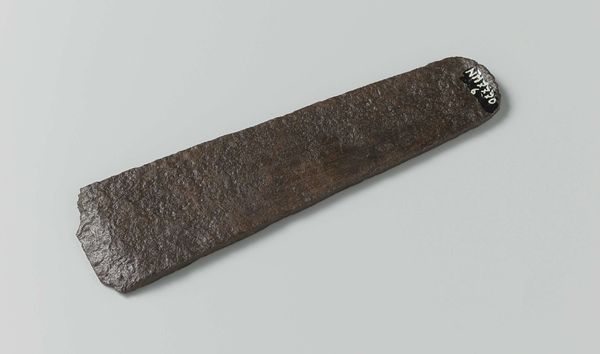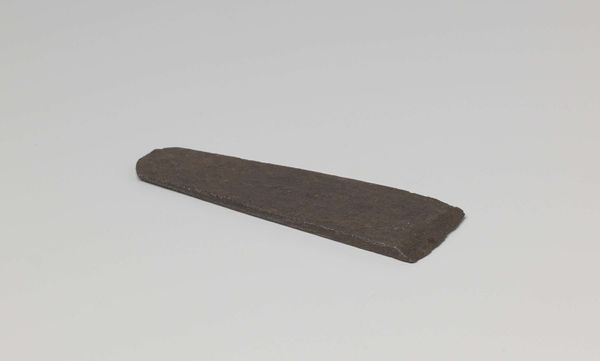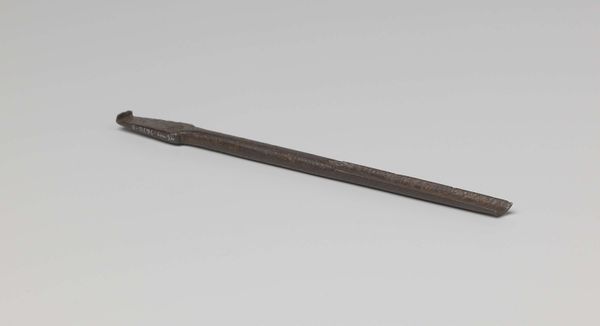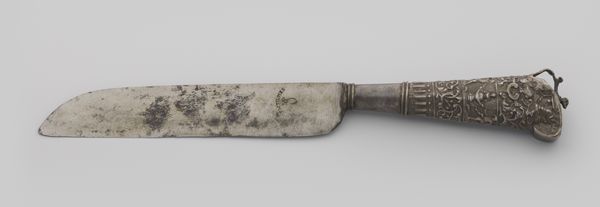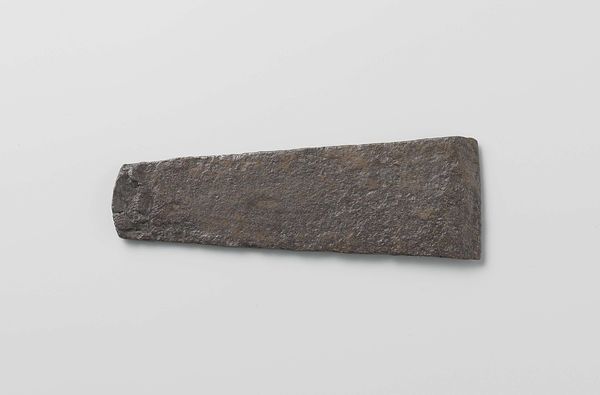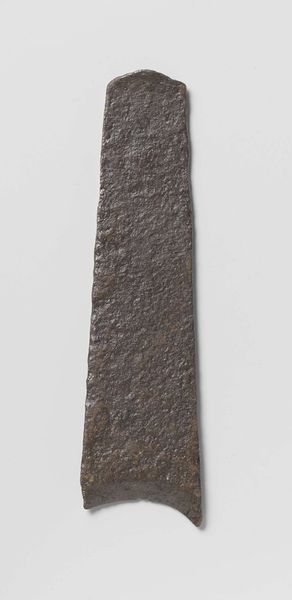
metal
#
dutch-golden-age
#
metal
Dimensions: length 14 cm, width 4 cm, weight 121 gr
Copyright: Rijks Museum: Open Domain
This is an anonymous hand-axe made of stone. It is now housed at the Rijksmuseum. At first glance, a tool like this may not seem to be "art". Yet, when museums acquire such tools, they subtly transform them into objects of aesthetic contemplation. The museum is not a neutral space. The very act of displaying this axe elevates it, inviting us to consider not just its functionality but also the skill and intention of its maker. Consider this: What did it mean for the people who crafted and used this axe? What were the social conditions that necessitated such a tool? Was its purpose simply utilitarian, or did it carry symbolic weight within its community? Historians can study such artifacts alongside anthropological records, oral histories, and archaeological findings to gain insight into the social structures that produced them. Approaching objects with an understanding of social and institutional context allows us to reflect on the choices behind their creation and display.
Comments
rijksmuseum about 2 years ago
⋮
Each ship was fitted with carpentry tools for making repairs. On Nova Zembla, these tools came in handy for building the ‘Safe House’. It is striking how little the tools have changed over the centuries; many of them can still be found in modern toolboxes.
Join the conversation
Join millions of artists and users on Artera today and experience the ultimate creative platform.
